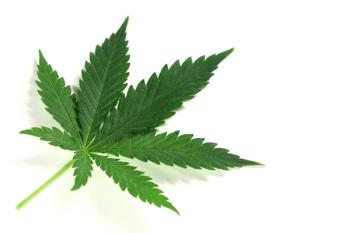On April 30, 2025, Dustin Sulak, DO, founder of Healer, a cannabis education and product resource, presented an analysis on recent research involving cannabis for various conditions.
The first study, “UK Medical Cannabis Registry: An Analysis of Outcomes of Medical Cannabis Therapy for Hypermobility-Associated Chronic Pain,” was published in March 2025 in ACR Open Rheumatology. As Dr. Sulak noted, this is the first study on the outcomes of cannabis used for conditions including chronic pain from joint instability. For this case series, data was analyzed on 161 participants who had been prescribed cannabis-based medicinal products (oil, flower, or both, and a mix of THC and CBD) at one, three, six, 12, and 18 months compared to baseline. Measurements were taken on pain, anxiety, sleep, and adverse outcomes. Improvements were seen at one month, though with loss of efficacy over time. “Out of all the demographic factors, what made them more likely to have this improvement at 18 months it was being a former cannabis user – it had a higher likelihood of minimal clinically important difference for pain,” Dr. Sulak noted. There was some attrition, Dr. Sulak noted, resulting in possible bias, in addition to some adverse effects reported.
The next study, “UK medical cannabis registry: an updated analysis of clinical outcomes of cannabis-based medicinal products for inflammatory bowel disease,” was published in January 2025 in Expert Review of Gastroenterology & Hepatology. Inflammatory bowel disease (IBD) includes Crohn's disease and ulcerative colitis, both affecting parts of the intestine, Dr. Sulak explained. To examine changes in health-related quality of life, 116 patients on the UK Medical Cannabis Registry completed questionnaires on sleep, anxiety, and other factors from baseline to 18 months after baseline. Improvement in general health-related quality of life was associated with the cannabis treatments (oil, flower, or both, and a mix of THC and CBD) at 18 months, and those with severe baseline anxiety and above-median THC doses were more likely to report changes in the impacts of IBD. “These inflammatory bowel disease disorders have an autoimmune component, so they are known to be responsive to anxiety and stress, and including stress reduction can help with the abdominal symptoms here,” Dr. Sulak explained. “When we're thinking about treating anxiety, if you see people with severe baseline anxiety, they're probably going to be more likely to have a beneficial response to cannabis.” He noted also the longer duration of this study compared with previous ones on this topic.
The next two studies focused on cannabis and skin conditions. The first study, “Evaluation of Biophysical Parameters of the Skin of Patients With Atopic Dermatitis After Application of an Ointment Containing 30% Cannabidiol and 5% Cannabigerol,” was a case series published in March 2025 in Clinical, Cosmetic and Investigational Dermatology. As Dr. Sulak noted, atopic dermatitis, known as eczema, is “the most common chronic and relapsing, non-contagious, inflammatory skin condition,” as well as prevalent and not fully understood. Previous studies have looked at cannabinoids as well as hemp seed oil for this condition, he noted. In this eight-week study, nine patients applied the ointment before bed to their forearms nd covered with a wet wrap dressing. Dr. Sulak clarified that “10% of the compound was a 30% CBD preparation. So truly, this was only a 3% CBD formula. It was a point 5% CBG formula, and it was a 10% hemp seed formula.” Improvements in skin parameters, such as hydration and oil levels, were seen more so at eight weeks than at four. “I think that's an important take home message,” Dr. Sulak noted. "For severe eczema, like the people in this study had, they might need to do this for longer period of time, and don't give up if it doesn't work in the first few weeks.”
The second study on atopic dermatitis was, “Improvement in Atopic Dermatitis Using a Novel Topical 2% Cannabidiol (CBD) Application,” was published in March 2025 in Dermatological Reviews. In this four-week, open label study, 19 participants applied the topical daily, with measurements taken at one, two, four and eight weeks. Participants reported improvements in and analysis of hydration, comfort, relief, inflammation, and overall skin appearance. “With this study, there's more evidence to topical cannabis presents an alternative to corticosteroid therapy,” Dr. Sulak explained. “We need more observational studies before big studies to know which cannabinoids work best.”
The last study, “Low doses of cannabis extract ameliorate non-motor symptoms of Parkinson’s disease patients: a case series,” was published in February 2025 in Frontiers in Human Neuroscience. In this case study, six participants with moderate Parkinson’s disease received one of two oral cannabis extracts (a mix of THC and CBD) for 90 days with measurements of cognition, insomnia, and daytime sleepiness. At 60 days, participants with the low dose reported improvements in insomnia, though no significant effects were seen with sleepiness or cognition. “Case studies don't definitively prove that cannabis is good for these conditions, but what they show us is that there's a signal,” Dr. Sulak explained.




